AA Membership: Growth or Decline?

By Joe C.
AA’s General Service Conference takes its own inventory, a process that has spanned several years. How well do we AAs meet our responsibility to reach out our hand, anytime, anywhere? Data helps answer these questions and begs the question, “What can we do to alter or improve?”
Let’s look at AA membership data. Each year our fellowship estimates our total number of members and groups. AA’s membership exceeded two million members for the first time in 1990 and peaked at 2.2 million in 2001. We’ve never relived that past glory. January of 2015, we counted 5% fewer members in our ranks. Outside USA/Canada membership fell by 13%. Does a smaller 2015 number tell us we’re doing something wrong? Or, is AA caught up in social trends among our community at large? For instance, how many people are today part of a bowling league or Kiwanis or Jaycees compared to their peak membership numbers in the past? How does AA’s current state of member engagement compare to society as a whole?
This just in: AA’s 2014 Membership Survey
Every three years our membership survey probes for details about our membership. Here’s a sample of the various findings from our triennial surveys through the years:
In 1996, 60% of members received medical/mental/spiritual help before we came to AA. Of our members under 30 years of age, 40% were female.
In 1989, 42% of us had a drug addiction (other than booze) and 70% of our doctors knew we were in AA.
In 1983, 35 to 40% of meeting attendees had less than a year of sobriety; today it’s 27%. The average length of sobriety in 1983 was 45 months compared to 10 years sober today. Our average age was 41 then and now it is 50 years of age.
All of the above are interesting snap-shot facts that we could talk about over coffee. Let’s isolate the last one: In 1983 our average age was 41 and today it’s 50. How does our average compare to average Americans – who make up over half of AA members? In 1983 the average Yank was 30.9 years old and AAs were 10 years older. So AA members were 32% older in 1983 than the national average age (30.9 x 1.32 = 41). And in 2014, the average American was older: 37.7 years of age. AAs were 12.3 years older than that: 50 years old. That happens to be the same 32% older than the average 1983 American, according to Statista.
So are AA members getting older? Yes; just as is the rest of the population. Is there a case to be made that we are simply keeping pace with an aging population? Americans and AA members have maintained the same pace over the last 31 years (AAs being 32% older that the average American in both 1983 and 2014). So it looks like we’re getting older, but so is everyone.
Youth
If you are looking for an “age” issue, maybe there is cause for concern in our teenage members. In 2007 our triennial survey showed under 20s at 2.3% of our population. Teen members were 2% in 2011 and dropped sharply to 1% in 2014. Let’s say for simple math that AA’s population was 2 million people in all three time periods. That means we had 46,000 AA teenagers in 2007, 40,000 in 2011 and 20,000 in 2014. Going way back to the 1980s, 15 to 19 years-olds were 4.6% of the American population and teens have since dropped as a percentage of total population this century as the average age increases. There has been stability in the latest decade. Teens in North America (age 15 – 19) have been pretty steady from 2005 (3.6% of Americans) to 2015 (3.2% of Americans). So in a period where the USA has seen a very slight decline in the youth, we have seen a sharp decline in AA youth. AA’s Public Information has put a reasonable amount of energy into youth outreach in terms of videos, posters and literature. In the late 1990s, it was anticipated that launching our website, aa.org, would hail a new era of increased membership – especially the younger members.
That prediction turned out to be just another Y2K prediction like Stanley Kubrick’s life on the moon and regular flights to Jupiter via Pan-Am Air (2001: A Space Odyssey, 1968) or Roger Smith of General Motors 1986 prediction that “By the turn of the century we will live in a paperless society.” It’s 2015 and I’m still stuck here on Earth and my desk is still stacked with paper.
What is to be made of the 50% drop in AA youth? Has there been migration to NA where dually addicted members need never hear, “outside issue” if they identify as an addict? How has the emergence of the 2007 fellowship, Teen Addiction Anonymous, impacted current and potential AA members? How many of the youth have already reclined into happy, joyous and free on-line recovery, thus not being around for roll-call by home-group secretaries? These millennials will be the early adapters to online AA life. Later, I’ll offer some examples of 12-Step members who are spending more time engaging the recovery community online than in church basements.
Gender
Female members in the 2014 survey are now 38% of AA. This is the closest to a 50-50 we have ever seen. Statistics will tell you what people do but torture stats all you like and they still won’t reveal why people do what they do. Are there more women drinking and more female alcoholics or is AA now more gender-neutral?
Race
Ethnic diversity in AA is bucking the trend in the USA. Multi-culturalism grows outside AA meeting doors but inside, we are trending in a more exclusive direction. In 2007, 87% of AA members were white, in 2011 it was 87% and now 89% of AA is Caucasian. According to Pew Research Group, America has transformed from 85% white in 1960 to 64% in 2010 and a projected 60% for 2020.
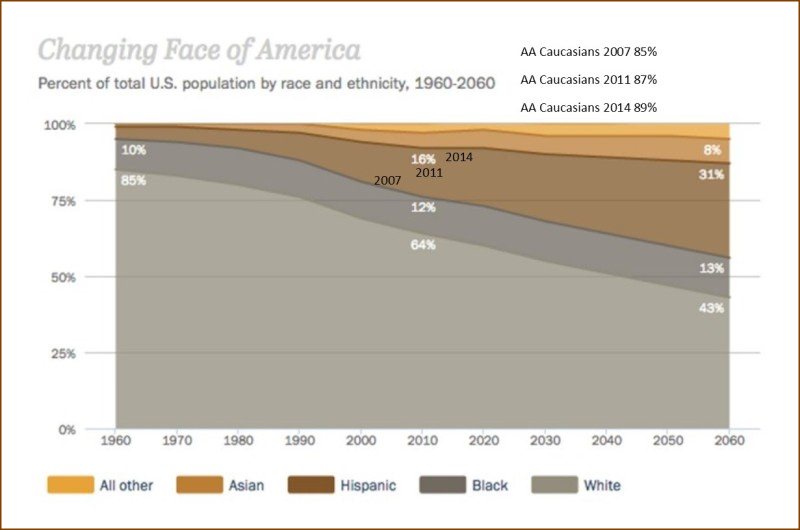
Alcoholism is not thought to be a Caucasian-specific problem. According to the Substance Abuse and Mental Health Services Administration’s (SAMHSA’s) 2008 Report on who is being treated for addiction, 60% of people being treated for alcoholism (and other substance use disorders) are Caucasian (21% African American and 19% other).
Is there something in AA rituals and culture that makes a certain demographic feel comfortable in the rooms and another demographic feel like they don’t belong? According to people who work in human-rights/human-resources, yes there is.
The problem is defined at USLegal.com as follows: “Systemic discrimination refers to patterns of behavior, policies or practices that are part of the structures of an organization, and which create or perpetuate disadvantage for racialized persons.” Not far from where Toronto Intergroup meets each month, the Ontario Human Rights Commission (OHRC website) states that, “The Commission is very concerned about systemic discrimination. Assessing and tackling systemic discrimination can be complex. Nevertheless, the Commission expects organizations to be aware that their ‘normal way of doing things’ may be having a negative impact on (minorities).” (Fact Sheet)
Except in extreme cases, systemic discrimination is unintentional. AA has a history of making room for women, African Americans and Gay and Lesbian groups. In many cases AA was closer to the front than the back of cultural shifts to equality. But the numerical data suggests that we are overlooking something.
Here’s a thought. I collected all this triennial survey information from years gone by from my visit to GSO, earlier this year. What do I see as I enter AA archives office? Pictures of people that matter to AA adorn the walls – white people. If a visage of Bill Wilson and Bob Smith – our first members – is important, then let’s celebrate them. However, shouldn’t our first African American lesbian member be just as celebrated? This isn’t about re-writing our history, it’s how we promulgate privilege and prejudice in our fellowship’s narrative.
Stewardship: Preparing AA for 2050 or recreating 1950?
What does it say at an AA conference where members speak from a stage that has no wheelchair ramp, or no ASL (American Sign Language) interpreter for the deaf? This is another form of systemic discrimination. In terms of stairs and no ramp for the stage, “But we didn’t have a disabled speaker on the panel,” might be the plea from a defensive organizer. Sure, but what’s the message to the wheelchair or walker aided member in the audience? Could we blame them if they heard, “AA doesn’t respect your dignity and independence”?
In this scenario, the stage is the medium and the medium projects a message. If literature, rituals and customs promulgate two classes – one of privilege and one of prejudice – then the message of our actions speaks louder than the message of our intention.
Yes, these are things that GSO ought to exercise “the courage to change the things we can.” But it’s just as true at our home group, district and area.
Mutual-aid, Bowling Leagues and Trends in Social Capital
Now what about AA’s population as a whole? By our own records AA membership is down 97,792 (5%) in January 2015 compared to a year ago. At times, I have been quick to point to what we AAs are doing and how and why our actions are stagnating our popularity. But is that true? To what extent are our numbers reflective of a culture moving away from this kind of community engagement? Well, as it turns out, at the turn of the century we were given a compass to help track where we are and what’s going on around us.
 Bowling Alone: The Collapse and Revival of American Community was a 2000 landmark book by Robert David Putnam, political scientist / professor of Public Policy / Political Science at Harvard.
Bowling Alone: The Collapse and Revival of American Community was a 2000 landmark book by Robert David Putnam, political scientist / professor of Public Policy / Political Science at Harvard.
The book looks at declining community and civic engagement in the USA. In post WW II USA, increases in middle class spare time and money had people getting out of the home in different ways.
Formed in 1895, The Bowling Congress of America (BCA) enjoyed a 400% membership surge in the early 40s (at the same time AA was growing). This didn’t last forever. BCA membership plateaued in 1964 and lost 72% of members by 1997. At BCA’s peak, they attracted 83 out of every 1,000 males over 20 years-of-age. This number fell to 20/1,000 (males over the age of 20) before the end of the century.
Similar climbs in membership, plateaus and sharp drops can be found in Jaycees, Kiwanis, Lions, Masons and Shiners. Membership in professional organizations has lost its glitter, too. The American Medical Association represented over 70% of all doctors and now only 40% of eligible members join. The same trend is found for nurses, engineers and other professional organizations.
Over the Bowling Alone timespan, AA membership enjoyed double or triple digit growth every decade from the 1940s until 1990 when we first eclipsed two-million worldwide members.
Putnam looks at growing apathy towards community and civic engagement, not as an internet phenomena but a trend that pre-dated small-screen life. In-home entertainment ramped up TV screen sizes. VCRs and 150 channels offered more reasons to stay home and watch something.
People who say that TV is their ‘primary form of entertainment’ volunteer and work on community projects less often, attend fewer dinner parties and fewer club meeting, spend less time visiting friends or entertain at home less, picnic less, are less interested in politics, give blood less often, write friends less regularly, make fewer long-distance phone calls, send fewer greeting cards and less e-mails … TV dependence is associated not merely with less involvement in community life, but with less social communication in all its forms—written, oral, or electronic. (Bowling Alone, p. 231)
It isn’t hard to see how AA could be impacted by this trend. Putnam talks about social capital as having two classes – bridging social capital and bonding social capital. Bonding social capital links people together with others that are like them. Bridging brings unrelated individuals and communities together. Bill Wilson cast our fellowship as both bonding and bridging, “We are people who would usually not mix. But there exists among us a fellowship, a friendliness, and an understanding which in indescribably wonderful.” (Alcoholics Anonymous, p. 17)
As he was writing the final thoughts for Bowling Alone, Putnam doesn’t overlook what is now obvious to us; from 1995 to 2000, households with computers exploded from 7% to over 50%. As the end of the 20th century, many of us talked about how the internet might be ushering in a new era, not just a new century. Putnam mused at how the same excitement was in play a century earlier. The end of the 1800s heralded in the era of wire-transmitted communication and Putnam comments on the similarities:
The new communications technology triggered a lively debated among turn-of-the-century social philosophers that prefigured with remarkable fidelity the quickening controversy in contemporary America about the effects of the Internet. On the one hand, optimists enthused that the new technologies of communication would allow human sympathy wider scope. Altruism would expand in a society newly unified by rail, power line and telegraph. In William Allen White’s Utopian vision, the new technological advances in the communication field harbored the possibility of making the Nation a neighborhood… The electric wire, the iron pipe, the street railroad, the daily newspaper, the telephone… have made us all one body… There are no outlanders. It is possible for all men to understand one another… Indeed it is but the dawn of a spiritual awakening. (Bowling Alone, p. 376)
Were the newspapers and telegraphs that were ushering in the 20th century an American spiritual awakening? Has the internet – for AA or the world as a whole – been what we would call a spiritual awakening? As well as euphoria, at times like these Putnam cautions that, “Social dislocation can easily breed a reactionary form of nostalgia.” Especially for older members of society, for whom adaptation to modern ways seems more risky, there is a craving for the good ol’ days.
The younger generation almost always looks to the future with optimism. I put the question of dwindling AA membership to Shelly, Bruce and Mark who co-host arguably the most successful and longest running addiction/recovery podcasts going, Recovery 101. They are over 900 episodes into this meeting after the meeting format. They, and their listeners, represent a younger generation of 12-Step culture who embrace new mediums of recovery and community. What did they think of sagging AA membership numbers? Would they pine for a return to mid-20th century AA? Not only did they not see fewer people going to meetings as no-big-deal, they didn’t consider AA’s count of people at face-to-face meetings as an accurate account of AA as a whole. The internet allows us to engage AA in ways that are not included in a pencil and paper survey.
Laura Silverman, at eight years of sobriety, created The Sobriety Collective. Laura came to AA in her early 20s when she got sober and didn’t really know there was an internet recovery community alternative. At first, she had to go to AA but after a year, she stopped going. Oh, she would come back for her anniversary once a year to celebrate sobriety. Around three years she was recommended to attend a young people’s meeting and that got her active again for another year or so. Then she started looking for something that fit her needs more that face-to-face (f2f) 12-Step meetings. She found it on the internet.
How many Lauras are there out there; dozens, millions? Look at how many Facebook, Google, Skype and Yahoo and Twitter recovery communities there are. I remember MySpace AA pages and ICQ from earlier this century. Google and Facebook could be replaced by the next best thing, one day. Look at what you and I and a whole community are doing right now; we’re living sober online. What’s a phase and what’s a trend and who’s to say?
AA as a whole may be following a cycle that has more to do with human nature or social convention than anything right or wrong we are doing in terms of stewardship. Female AAs are at an all-time high and I don’t think the original literature is any less misogynistic than it was outed for during the women’s lib era. What facts ought to lead to what conclusions? I see in our data that we can modernize AA – look ahead to AA 2050, not back to AA 1950 and prepare our home-groups and AA as a whole for tomorrow’s newcomer. Looking at data, I am pulled by my biases and my inclination towards confirming my preconceived views. Don’t we all?
Now, I look forward to your feedback.
Sober since 1976, Joe authored the first secular daily reflection book for addicts and alcoholics, Beyond Belief: Agnostic Musings for 12 Step Life and hosts a 21st century look at 12-Step life, Rebellion Dogs Publishing.
Joe has been an important contributor to AA Agnostica over the years. Here are his articles:
- A Changing Landscape (May 13, 2015)
- Living with Lillian (February 11, 2015)
- Letting Go of God (October 26, 2014)
- Together We Can (August 31, 2014)
- A Reverend at the Agnostic AA Convention (April 13, 2014)
- Is listability the new AA? (January 19, 2014)
- Six Shades of Nonbelievers (August 11, 2013)
- Pharisees and Recalcitrants (August 26, 2012)
- Quadrants of Knowledge (June 24, 2012)
- Never Fear Needed Change (June 3, 2012)
- The Silver Tongued Devil and I (February 25, 2012)
- Let the Wood Burn (December 13, 2011)
- AA Public Information: “Let it Begin With Me” (July 24, 2011)
For the record, Joe’s first article was the fourth ever posted on AA Agnostica. The first, Anarchy Melts, by Bill Wilson and initially published on the Grapevine, was posted on June 22, 2011.


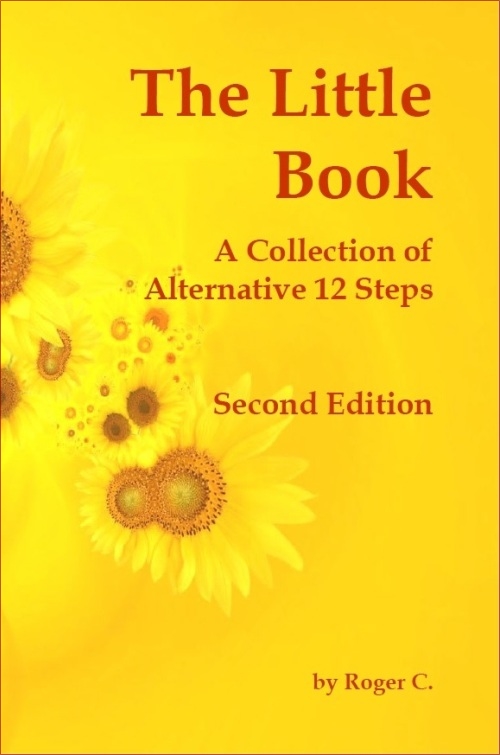

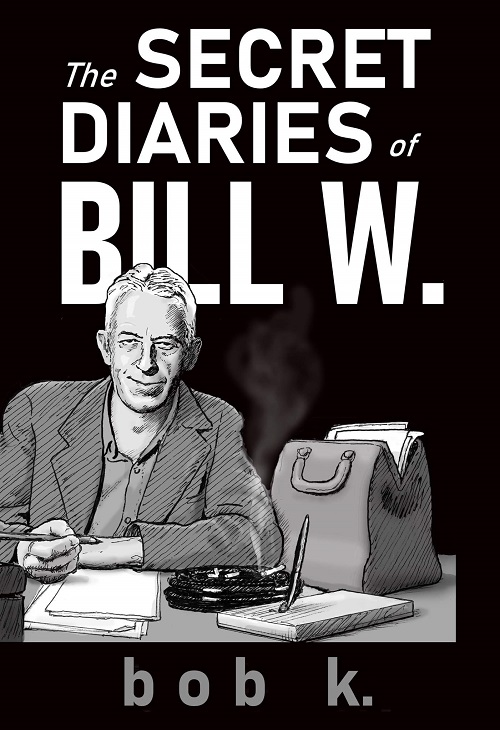

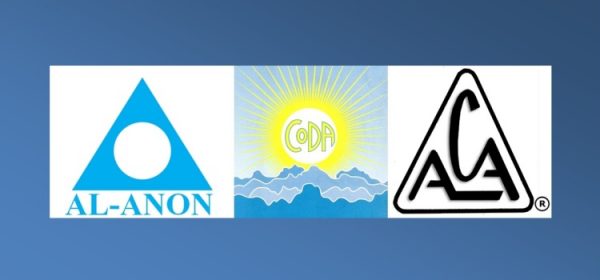


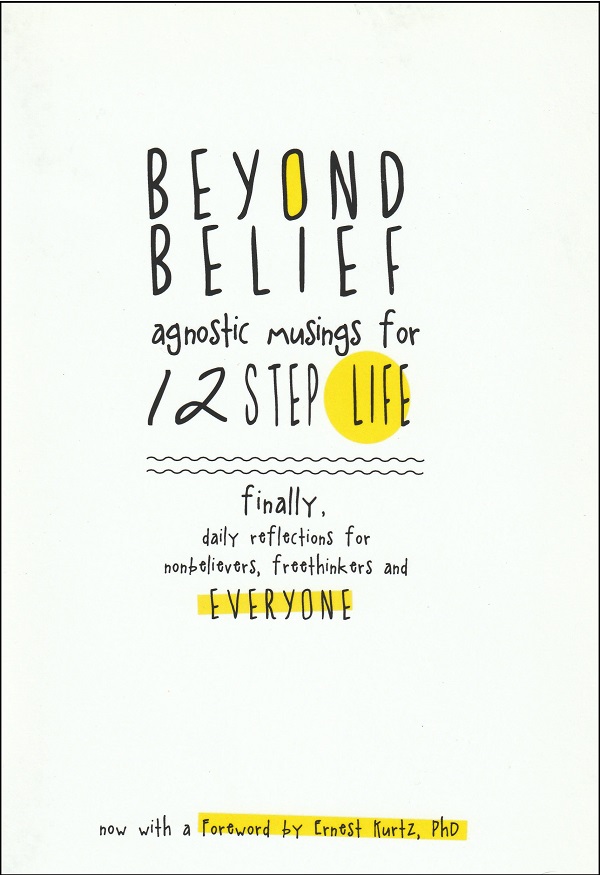

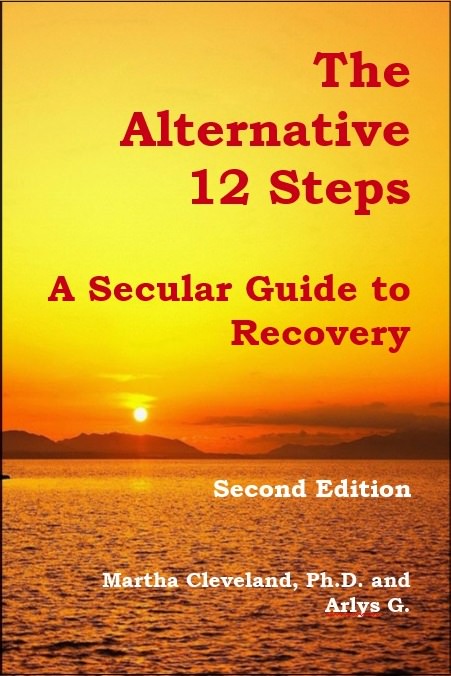
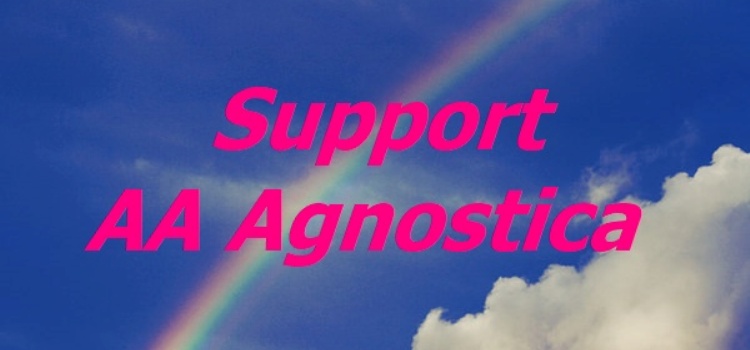



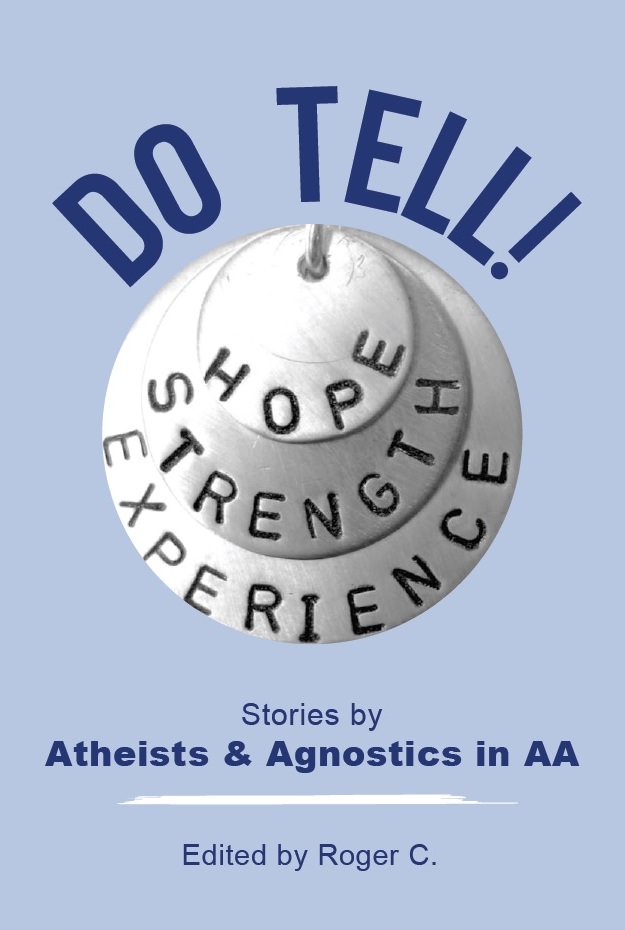




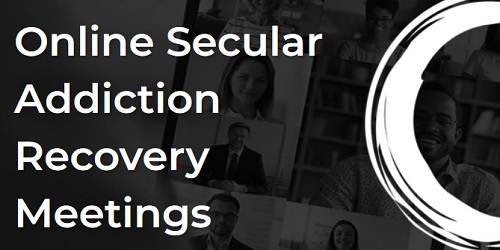



The decline is matched with the growth of SMART and LifeRing. These also are more effective for some and do not depend on a god. These educate the addict away from the problem. They do not consider drinking a moral issue but a behavior, and produce change on that basis.
Of all the statistics, most interesting to me is that total membership is the same as it was 25 years ago. Of course, population has risen, so AA is worse than stagnant, it’s in decline. Our “market share” in North America is down about 30%. I’d hate to be a company president presenting those numbers to the board.
This is all a touchy subject for the defenders of the “perfect program,” and they seem to miss the irony of attacking the “flawed” statistics. They’re OUR OWN freaken statistics!!! Also, we’re comparing with our own flawed statistics of 25 years ago!! The admitted sampling imperfections, etc. average out. Further, there was no whining about the stats when the numbers were more favorable.
I’m afraid AA is becoming increasingly seen as old-fashioned – it IS my father’s Oldsmobile.
But WHATEVER we do, let’s make SURE that we don’t change anything!!!! SMH.
Ask Roger how much more analytical the first draft was… Hahahaha. Your point is well taken, Bob. Not only did AAs numbers stay flat as the USA went from 250 million to 320 but even this national number of self-identifying Americans in recovery, it climbed from 20 to 23.5 million in just a few years and AA stayed the same. Now that USA survey question is a matter for a different day. It’s about as scientific as People Magazine.
Hahaha. Glad Roger was there to save the day. Whew, can you imagine Joe on full-tilt analysis?
It might be why I’ve spared the ole boy from such agony.
Excellent, Joe — thanks as always . . .
The question I have from AA’s statistical analyses and your interpretation of them is akin to that old anecdote about mid-19th Century scientists trying to describe the elephant — one was looking at the tail, another at the massive body and yet one other at an ear. It also reminds me of the Roman Official at the turn of the 1st millennium AD who allegedly queried, “What is truth?”
One of the impressions I derive from the exponential growth of secular AA in my city of Portland, Oregon is that we are getting a large number of millennials and Gen-xers mixing with us older folks with longterm caucasian-and-ole-time-religion-oriented AA members. A member of one of our secular AA groups last Friday at a meeting stated, “I’ve only been to one orthodox AA meeting, my first, and it was my last.” He picked up his 90-day chip. He’s one who didn’t leave AA to perhaps die drunk, thanks to his higher powers, our secular AA groups.
This bodes extremely well for the future of AA as our unorthodox message of possible sobriety in AA grows and evolves.
I believe there is a correlation between the decrease in believers in a god and the decrease in AA, which is a religious program.
Stats can be extremely limited by the perception or preconceived ideas of the statistician. I don’t go to many F2F meetings out here as they are basically Old Boys’ Clubs where I am the only woman: a feminist and an atheist. And the droning on about their personal (male) saviour is further alienating. I compromise my own beliefs in order to fit in: I read the promises or whatever I’m asked to read as I want to be part of, somewhere, somehow. But even there, the chanting of “we think not” is reminiscent of the worst of my RC upbringing.
I’m considered oddball enough for my lack of participation in the LP.
My point? With nearly 30 years of sobriety I would not fit in very easily with any survey or be accessible for an AA survey. I don’t belong to a group but read many, many secular recovery blogs and sites such as this to keep my sanity.
Because yes, I am alone at the F2F meetings as it is a lot of work filtering out all the religiosity.
Thanks for the article Joe.
Joe –
Great article and well researched. As an aside, I was astounded to read the the phrase “racialized persons” – offensive in so many ways and the first time I have ever encountered it. With respect to your analysis I wonder if comparison of AA to Kiwanis and Bowling Leagues might be a little off target? I wonder what we would find if we explored the statistics for people admitted to hospital ERs with alcohol/drug overdoses? or numbers of arrests for drug and alcohol related crimes? Those data might be expected to reflect the prevalence of drug addiction/abuse in our society. Membership in AA might also be expected to reflect the same phenomena. Could that possibly yield a more apples to apples comparison? Did you happen to look at that information as you compiled this essay?
I get the feeling that American record keepers are more interested in race than in Canada. Whenever I join a trade association in the USA the always ask me race. I put “other: human race.” Demographers note that our youngest generation hates to be labeled by race, sexual orientation, age etc. Next America notes that 15% of marriages are mixed race and this ought to lead to a predominance of mixed-race. Some of us will remember how racey it was for an Irish and Italian Catholic to marry.
There is quite a bit of data to look at on number of people going into treatment, those who claim to want it but don’t have access etc (ever seen an NA or AA meeting that couldn’t meet the demand? The free stuff has lots of space and the pricy stuff has waiting lists).
Russ,
It is going to be hard to discount actual trends in North American trends regarding “voluntary associations.”
What might not seem relevant at first glance, just might have more influence than we think.
It should be clear enough that AA exists within a social milieu, and that milieu has always had an impact on what occurs within the rooms. Or so it appears.
Maybe we can call this general cultural bleed over or something.
It is interesting to me, for example, to note the life of two ideological trends that appear to run side by side each other in the U.S..
The time periods that mark quantifiable shifts towards the far right by certain types of fundamentalist believers, not only theologically, but politically, essentially mirrors when those highly similar “trends” appear to pop up in AA subculture of recent history.
Correlation is not causation, of course, but such correlations cannot be ruled out until arguments, and evidence show otherwise.
Just some rambling.
peace
Thanks for the fine article! I am 55 years old and have been an AA member (sober) since 2001. I live in a remote area – but we have 6 meetings a week in this mountain county here in SW Colorado. I have seen our membership increase quite a lot the 5 years I have lived here. Many more young people – who, like me when i was that age – tend to come and go and come back again.
I believe the stats are hard to quantify – as many young folks might have a drinking problem and then grow out of it. I have found that this disease is NOT black and white – that it is far more complex than the AA dogma suggests. It is NOT like pregnancy – as many AA folks suggest – that either one has it or not.
I am lucky that I hit such a horrific bottom and am 100% sure I am the real alcoholic. So I do not have to test it! I have sponsored some men in their 20’s – and they have not sunk to the level I did. I do my best to convey my experience, strength and hope – but it is of course up to them to decide if they are indeed alcoholics.
We have a fine sober community here. I cannot imagine doing all my meetings online! I find my higher power in my fellow recovering alcoholics IN PERSON. “People Power” is, for me, the #1 force in AA. there could be 8 steps or 14 steps… this is not the vital force that cures me – mere words. It is BEING WITH others, face to face, that keeps me on the path.
But this is just my own recovery – and whatever works for others is fine. I just hope that we continue to gather at meetings and the online thing does not take over, as it has for so much else. There is lots of room for BOTH. But in the flesh can never be replaced by machines.
Joe, thanks for this. Well done.
One thing I see no-one mentioning is the recovery centers. AA used to be made up in part by lots of newcomers who, because of the way oldtimers tend to engage themselves in newcomers’ recovery would probably stay on for a good while in many cases where now they go to a 28 spin dry and are then out on their own, and they are of course told to go to AA, but most dont, they just go relapse for lack of a support community.
Other than that the availability of more flexible solutions on the internet has undoubtedly swallowed up many would-be AA members. It is indeed a safer place to go for the scared newcomer. the exit is only a mouse click away, not on the far side of a room full of staring eyes…
Further, the fact that AA is primarily based on the written word, and an archaic one at that, is bound to drive many away. Poverty, lack of education, and race do tend to line up in this country, so that anyone not well educated and white will feel like the odd man out in AA. We are way less judgmental in AA of someone at an AA meeting who is asked to read, and it is obvious they don’t understand what they are reading by how many words they mispronounce, yet it is obvious that they themselves are painfully aware of how little they grasp of the written word. That it is archaic certainly only makes it worse.
Our whole culture is moving away from books. Even intelligent people who are able to read are likely to seek their information in google, rather than in books because it is so much easier to find what you are looking for. AA is so focused on its sacred texts. I doubt if even half of our members have read the BB. I used to read it once every 3-4 years myself, but of course having gotten radicalized as an agnostic it is doubtful that I will ever read it again. Though recently I discovered a really good definition of spiritual experience on page 27.
Enjoyed your comment, life-J,
I’ve been wondering lately what, if anything, many nonbeliever types DO find useful, relevant, or descriptive of their problem or solution, in the Big Book.
For me, there are a few sections, paragraphs, etc., that have the “ring of truth” in my case.
Not much, grant you, but I’m curious what others have found relevant, or useful within the book.
peace
Mark,
For me, not much. The beginning of chapter 3, well most of it, but especially “Here are some of the methods we have tried…”
As for the steps I don’t think a whole lot of them anymore. I think the primary benefit from the steps, if used, is they get you to DO SOMETHING. In order for us to improve we need to have A program. Of course there are limits to what such a program can and ought not contain in order for it to work, but the greatest fact is that there is A program of some sort, so that we aren’t just standing there wondering, ok, I quit, now what?
We have something we can do to improve our lives. There are many other things we could do. And in particular of course the steps take a christian approach to change, but they also are mostly written for the type A personalities that started it. The powerful that really did need to get their egos deflated. There is little in this program for all those of us who need to get our egos boosted, who have suffered abuse and gotten the crap beat out of our personalities.
That much said, religion is a powerful force, and hate to say it, but it is probably the religion part that pulls people in so well, and keeps AA together so well. It fits in well with the fact that after all, 80% of the country is christian. Yes that is changing, but not so much as we would like to think, sitting here talking with each other without any rabid fundamentalists to spoil our fun.
I can tell you what I read when I came in, what made a lasting impression on me. I read Bill’s Story and I read some of the stories at the back of the book. Everything else I read seemed to be based on conjecture and speculation – chapter to agnostics, wives and so on. I started to recoil when I kept seeing words like “defect”and “shortcoming” applied to me when previously I was assured that when alcohol entered my system I was powerless. But the use of “defects of character” (a description that could easily be applied to a psycho killer) and “shortcomings” aren’t accidental, they are serious enough that perhaps they need to be turned over to a Higher Authority. It stunk then, it stinks now.
Another excellent article, Joe.
I appreciate it.
I wonder if, at the peak of membership in AA, the percentage of compulsory attendees, ie, those getting their papers signed for parole officers or boards, was about the same?
Great article, btw.
Dave B
How do we determine how many members we have? I am on this subscription list, does that make me a member? I have not had a drink in over 27 years: I go to one meeting, usually weekly, am I counted as one member? If I go to two meetings, neither knowing about the other, am I counted as two members? What if I just consider myself an attender and not a member? Then there is the thing about anonymous.
I agree, Richard.
We are all virtually nameless, no-one knows exactly how many members each group has, how many are members of two or more groups, who drops out, who comes in, who moves to Europe, to New York, British Colombia & so on, who changes cities, who dies.
AA will not allow itself to be known.
As Maureen F. says, the numbers are of no use if they are inaccurate.
I think they must be deeply flawed.
I’ve been looking forward to this article for quite some time. I’ve been in AA for 27 years and this is the first time that I’ve ever seen a membership survey.
It never occurred to me to look at an overall shift in our culture moving from social groups like bowling leagues to just doing things independently. That makes sense. People just don’t join groups like in the days of old.
I was really surprised to see the racial divide so great. I guess that I shouldn’t be when I look around in meetings and see mostly white people.
I don’t notice it though because where I live, probably like most cities in the US, we are still a society segregated by race. We have black groups and white groups. It’s sad to say that, but it’s the truth.
I know that many groups in our urban core are struggling. I hear from them at District meetings, say they aren’t getting younger people, they are closing down meetings, etc.
It’s just the opposite at our We Agnostics group. We are growing quickly, adding meetings and we get a lot of younger people. So, I have to think that we are doing something right. However, improving racial diversity is not one of those things. We are still mostly white.
I’m rambling here a little bit, but my mind keeps coming back to why AA is so white, and all I can think is it’s social conditioning. Because we are mostly white, we reach out to people who are more like us than not.
I think that face to face meetings are important and always will be. I think that it helps to focus more on the human connection than the spiritual connection. I also think that all of us in AA, whether we be Orthodox Big Bookers or liberal atheists can do more to reach the suffering alcoholic who is not being reached at present.
Thnx Joe
why the math question?
If my experience is any example this morning the only ones who will be joining are the truly religious.
Listening to all the God / HP stuff I thought about how any newcomer who was one of us would react. I would have RUN AWAY when I was newcomer. And I suspect many do not consider AA when GOD is presented as a must for sobriety.
This is my punishment for moving to the bible belt.
Yet I persist in confronting these zealots.
Next month I will celebrate 45 years of sober membership in AA! Let them chew on this. Practicing sober – secular living in AA is a puzzlement for them.
Tolerance and love go out the window when confronted with a sobriety they do not understand.
Marnin
Marnin,
I loved the way you described your experience in the Bible Belt, especially the last sentence.
You put, “Tolerance and love go out the window when confronted with a sobriety they do not understand.”
“Serenity” can be added to that list as well, as a practical matter. My guess is you have experienced people who come off as very religious, calm, together, and personally pious, yet those qualities evaporate like a snowflake in a volcano when they have just heard an atheist describe how she is living sober, etc.
In my experience it TAKES time for those who only conceive things as what a literalist posture to the Big Book, and can only speak of “sobriety and recovery” in the language games of Protestant fundamentalism, to ADJUST to an open atheist who speaks in the language game that is decidedly not part of the Parroted Narrative of Big Book Echo Chamber.
It is a challenge for the nonbeliever, and for the believer to learn to grow in Love, Tolerance and Serenity in the midst of “apparent disagreement.”
At 5 years, and 9 months sober (as an out-of-the-closet atheist), it is truly encouraging to me and others when you “old timer” heathens speak up.
Happy Trails!
Mark,
Thanks for your comment.
At 5 years of AA sobriety I was still trying to act as if I knew I was in the wrong pew, but really did not see an alternative.
Sometime in late 1970’s the NY Times had a book review of James Christopher’s book “SOBRIETY WITHOUT SUPERSTITION” and I was off and running with this.
Now at 45 years I’m still at it. Marnin.
ps. Hope you find fellow travelers in Texas AA.
Marnin! I’m with you!
I am a 6th generation Texan & with almost 10 years of sobriety, I am getting to where I can barely stay seated in the meetings here in my district. I guess I will have to start doing some travelling.
I’ve tried for years to conform & fit in but I’m finding it harder & harder to keep my mouth shut. I hope I can find my voice some day, for the sake of the newcomer — and myself.
Thank you!
JLR
Does anyone know where I can find a description of the research methods and design for this AA Membership Survey? I can only find bits and pieces on the AA website, e.g. they send the questionnaires randomly to groups, but how do the questionnaires get distributed within the group? Also, the survey report should be accompanied by cautions regarding the reliability and validity of the data. The numbers are no good if they don’t give an accurate picture.
Excellent article in which most factors are cited for AA loss of market share. Yet, wherever there is a trend there is a counter trend. Here are a few that were not mentioned.
Everything is a bell-shaped curve. The Oxford Group rose and fell. So will AA, USA, and Canada. Maybe we’ve seen the zenith of AA.
Twenty years ago that same government organization that you mentioned, SAMHSA, was recommending AA to people with substance abuse problems. Today it is endorsing “evidence-based treatment.” (By which it means CBT). And it is saying that AA is not evidence-based and it is not treatment. Both are true.
As for race, that is a mixed matter. The rise of the NONES should indicate a decline in all religions including AA, and yet some religions in the US and Canada are experiencing increased membership. And Blacks, traditionally highly religious and remaining so in recent polls, should be moving into the religion of AA and we should be seeing that increase in the numbers. But it isn’t there.
One other possibility: Market saturation. Every addict in the country knows about AA now.
Secular AA, as small as the movement still is, is more tolerant and accepting than trad AA. So we may help increase membership numbers in the future.
Thanks Joe. I really enjoy your essays. It feels almost shameful to add a comment… but only for a moment. I do not spend much time worrying about the decline of AA as it all depends upon the people involved in any given group and we are dealing with massive changes all across our society and civilisation.
Western Society as a whole with the exception of certain pockets, mostly in USA! is becoming much more secular, progressive and Liberal. Education standards are generally high and computer literacy is, of course, unprecedented. These facts and others are radically transforming the processes of how things are done, how information is processed and spread and how the various zeitgeist(en) travel.
Many institutions suffering declining interest and numbers are panicked into ill considered progressiveness (which can look silly) or radical fundamentalism which is often a symptom of systems in decline. We see it in both christianity and islam. In AA it is manifested in the “Back to Basics” movement which I view personally as the most destructive challenge AA has faced since the beginning squabbles. As society ages, matures and become rapidly more secular, any kind of hard line religious approach to problem solving is losing favour almost everywhere. I believe people accepted a lot of shit from AA in the past because of a desperation that does not exist today.
Addiction is seen by most as a treatable disorder with human contact and gentle personal development seen as a couple of many solutions. Alternate recovery methods not based in the Oxford Groups christainity are very powerful and compelling at a personal level and rational psychology and methods are on much firmer ground than they were a few decades ago. Treatment in Canada has been made in many cases, especially in professional and technical groups, a serious business and the responsibility of the employer, union or association. Attendance at a recovery centre with strict follow up and monitoring combined with a recovery group has proven to be the most effective in general of all recovery strategies (other than lifetime hospitalisation). I find, in my own experience and that of friends that “hard-line AA” as presented by so many groups is anathema to those who have been through modern treatment processes. The BB is clearly dated and its christian god focus is totally alien to many in the modern world. The insistence on ritual humiliation and powerlessness is over emphasised by many groups and is detrimental to a lot of people’s sense of personhood and identity. I feel that the basic AA program used with compassion, respect for the individual and common sense can be made to work for just about anyone. The fundamentalist movement is symptomatic of a dying way of doing things and many come in… and after one meeting never, ever come back. There are alternatives nowadays and traditional AA becomes fundamentally (pun, get it? hee-hee!) unattractive.
Thanks Again; dan L.
Another exceptional article. I must say, AA Agnostica is the most refreshing, informative, and encouraging thing that I’ve discovered in my recovery journey to date.
IMO, the 20+ year stagnation in conventional AA meeting attendence is stunning evidence of an organization in decline, in sore need of some serious updating of its 1930’s message and program. That said, it is illuminating to see AA’s current status framed within the context of the larger society’s secular shifts, and the equivalent reductions in membership of other organizations.
This is a new slant on the situation, which I had not been aware of. I *try* to remain receptive to new information and different perspectives. I wish the same could be said of AA.
Fascinating! Of course a tree doesn’t reach the sky so how much further can AA grow? And these statistics only relate to USA/Canada, which have about half AA’s total membership. AA is in 150+ countries, some of which may be growing rapidly as AA did in the US for years. In many of those countries white Caucasians are the ethnic minority. Apropos, Jim’s story in the Big Book: This physician, one of the earliest members of AA’s first black group, tells how freedom came as he worked among his people.’ Maybe Jim’s pic should be up there at GSO with Bill and Bob. It is said that at one time the French education minister could sit in his/her office, look at their watch and no exactly what was being taught at that moments at every school in the country. One of AA’s strengths and weaknesses is that we have no central command center. GSO or the Board or Conference can’t tell, e.g. a convention committee to make arrangements for folk with special needs; they can only make recommendations. I would hope those organising such events were not so boneheaded as to ignore those members, but each group is autonomous and has the freedom to be imperfect. (My home group meets in an upstairs room at a small church with no elevator. Should we abandon our meetings because we can’t provide for alcoholics with other disabilities, or do what we can to carry the message with all its limitations?) There were arrangements for disabled members at the Atlanta reunion, where the attendance BTW was 57,000. So is a glass half full or half empty?
Like a well led face to face (f2f) meeting, what we started with this week was eclipsed by the wealth of viewpoints and personal experiences. Re-reading the comments from yesterday and enjoying today’s for the first time, I find myself saying, “Hey, yeah!”, “Right on!” and “I wish I had thought of that.” It’s great.
I know Bob k has been prompting Facebook groups with invitations to weigh in on their view of the value of online mutual-aid vs. f2f meetings. People are passionate, if not so much to the greater issue of the future of AA but to their own convictions.
Since Atlanta, where a couple of speakers -(John K) who was the last speaker on the last panel on the program, “More Will Be Revealed” and the last speaker on the “We Agnostics” panel (whose message was transcribed here a few weeks ago) – channeled Bill Wilson from this 50 year old message from Toronto about the need for opening our minds and hearts to new ways of seeing and conversely, the dangers of dogmatic rigidity.
Bill closed the 30th AA Anniversary Convention with, “Let’s never pressure people with either our individual nor our collective views. Instead, let’s accord each that respect and love which is truly the due of every human being as (s)he tries to make (her/)his way to the light (and despite the overused religious metaphor of the “light of God,” Bill preceded this statement with a celebration of the atheists, agnostics and new members of every different creed and culture, hence, light can just as easily mean clarity, sobriety, sanity, vision or any number of secular synonyms).”
I see conviction here and more importantly, I don’t see that conviction blinding us open and sometimes heated or controversial discourse.
Joe C.!
Thank you for yet another stellar article! One of the things I admire about your writing is the focus on Big Picture trends and themes.
I find these sorts of themes and concerns practical in that they help form broader perspectives, and thus aide the solo heathen in an AA group to not be overwhelmed by often very local, very hyper-religious ideologies.
What I find among many of my hyper-religious AA friends is an absolute absence of concern for the bigger pictures of AA as a whole, and of course the trends in North American society and culture.
The fundamentalists around these parts tend to double-down on the attempt to utterly dominate the LOCAL scene; often by any means they deem necessary. This situation quite a bit over the 5 years and 8 months of my involvement as an “open atheist” in AA.
In a very real sense, “all politics is local.”
What actually goes down in local, traditional/conventional AA meetings is where the rubber hits the road. I can have the biggest, most informed perspective possible, yet be overwhelmed by simple, perhaps daily struggle to maintain Honesty and Tolerance in the face of unmitigated bigotry and overt hostility.
Happily, as dire as all this sounds, IF it is the initial experience, it will not remain so IF the open and out nonbeliever Keeps Her Seat, and continues to reach out to other human beings, as a human being…. this can take some time, and many grievances if there is nobody else in the room who is out and honest.
After 5 years, and 9 months of “keeping my seat,” the atheist, agnostic, or other type of nonbeliever does not have to confront dealing with a front of religious, bigoted Zealotry in order to begin to live sober in my home group.
Honesty and Tolerance has grown, and continues to grow.
peace
I agree that the religious fervor promoted in many AA meetings is seriously harming our fellowship. Since the number of people with secular beliefs increase, I hope oldtimers and others will realize harping on the idea of finding god as the main goal of AA is wrong and against our reason to exist – to stay sober.
Nice work Joe. I didn’t read the Bowling Alone review but I think your portrait of AA is bang on and it points, at least to me, to the simple conclusion that AA is not relevant nor has it been for some time.
I’ve chirped away, at various times, about what I see as the systemic demise of the fellowship but my voice echoes in the canyons of indifference that most AA meetings have become. I suspect AA will one day be remembered as a quaint but failed exercise in attacking the issue, not of alcoholism, rather, addiction. That it doesn’t recognize and accommodate young attenders who are multiply addicted is about as obvious an explanation for a perpetually aging organization, losing its way, as I can find.
Read the Big Book as critically and objectively as one can and two things are patently evident: as a program it really never knew what it was and, whether consciously or not, is, de facto, an exercise in Christian conversion. How many times does the book redefine its purpose?
There are many, many more examples of Bill Wilson re-determining the book’s primary purpose. It could have been, he knew he would have doubters scanning his pages so he obfuscated its actual intent (consciously or unconsciously), Christian conversion, by allowing for “a Power Greater than ourselves”. But read on and that crack that doubters could squeeze themselves through eventually gets sealed, and God entirely supplants the “Higher Power concession”.
AA has successfully claimed dominion over the word “spiritual” which, if you go back to its origins meant, “of breathing”, in other words, the life force. Which means if you love the opera, rock ‘n roll, hockey, whatever, each is capable of lifting you spiritually enough to provide a “spiritual experience”. But Bill wasn’t alone in equating the spirit or spirituality to all things religious so, you wonder what confusion prompted the curious and defensive reminder we get in all meetings, “this is a spiritual meeting not a religious one”. A statement that two State Supreme Courts declared false acknowledging that 5 of the 12 Steps speak to God and reflect the basic tenets of theistic fundamentals found to uphold various Judeo/Christian systems of faith.
AA was started by two white men who, at least by birth, were of, or sniffing distance from, the ruling class in America. Christian, conservative, racist, retributive types who believed children should be seen and not heard. So with those characteristics being the legs propping up any respectable organization, they indeed are threaded throughout AA. And we accept it because, upon entering AA, insecure and without self esteem, we do “admit” rather than “agree” or “accept” that we are “powerless over alcohol”.
We put up no resistance when told we’re “defective” folks who have a tendency to repeatedly come up short (shortcomings). And it’s only if we serve our wretched, defective, selves up to God and his mercy, will we have a chance at redemption.
AA’s Big Book, first published in 1939, written by a man who’d achieved 5 years sobriety by trying to help other alcoholics, who’d cobbled together something that represented a codified program that stray sheep could follow, in his ultimate absence, to redemption, is still the first and last word on alcoholism and how and why we get sober. There is no channel in AA for new information, knowledge and treatment modalities. The Book with its absurdly flawed arguments to agnostics and atheists, to employers and to wives, couldn’t be more patronizing and outmoded. If I was 22 years old, tattooed head to foot, knowing more about chemical interactions and ways to get high than most of the people in the room, I figure you might get me to two meetings. The first because it was strongly suggested. The second, to make certain the bat-shit crazy things I heard in the first one, wasn’t, in actual fact, a reality show prank. Then I’d be out the door.
Hey AA GSO, how about at least a new Doctor’s Opinion with each new edition of that rickety old tome of Bill’s? You know, just to see.
Hi Brent P. I think what I love most about this site is people saying out loud, clearly and literately, what I have been thinking. It is so uplifting and to me it really shows that one of the main messages of AA is “you are not alone” and “together we can recover”. So much of the other stuff is ancient BS. It is the principle not the ritual. Thanks.
Dan L., AA is a fellowship, at least that’s what it says initially. And apparently, under the aspirational circumstances that most meetings provided, that fellowship helped many a man or woman, drinking alcoholically, to first question their drinking, eventually recognize it as a problem and finally, throw in the towel. After that last drink, it might take a few weeks or even months to feel human again, but it’s not that long before they’re on the team, happy to chip in to make certain the doors stay open for others suffering the same problem. Full stop. End of story.
Entering the “spirit world” fouled what was a simple, sincerely intended experiment that was proving remarkably effective in helping suffering alcoholics. No human power? It was all human power and it’s still evident but not quite the same way it was when Bill turned his house into a BnB for guys accustomed to living and drinking in flops.
This article and the comments baffle me. First and foremost I have longterm recovery and I am quite active in AA – thus I may be biased, but so might you…
Many commentors here seem totally unfamiliar with actual AA literature and practice. Several comments state things which seem angry and condescending – the very things that upset them about AA. That seems ironic to me. There are grumpy oldtimers everywhere, but I believe they are rather rare.
My confusion arises from these 2 main thoughts: (1) AA literature, particularly the Big Book, clearly states that “we” have no monopoly on recovery. Thus, why would members care if someone seeks help from other sources? and, (2) I am not a Christian and have NEVER felt put down for my beliefs. In fact for the first 3.5 years of my membership in AA I described myself as an atheist. I do not recall a single instance of being belittled. Today I have experienced The Great Power in my life, but it is in no way a Christian concept. In fact I, and a few others, frequently remind folks that openly sharing a personal God-concept, rather than God-consciousness, may be off setting and upsetting to some. Again I do not recall being attacked for this stance.
Perhaps painting AA as a religiously-Christian, white, middle-class, misogynistic, and racist relic of the past is painting with very broad stroke. And that is as unreal as the minority of AAs who think/act/believe that only Alcoholics Anonymous works so anyone in opposition to it is living in untreated alcoholism. Makes one think, huh?
Well put, Curt.